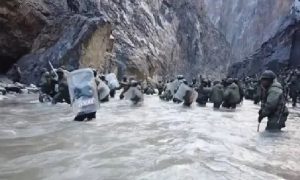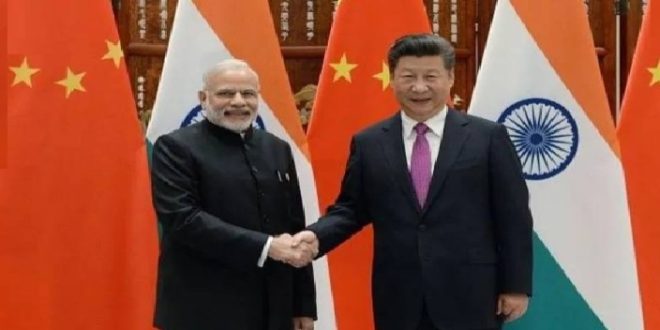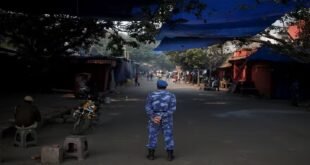22-10-2024
NEW DELHI/ BEIJING: India and China have agreed on patrolling arrangements to de-escalate tensions along their disputed Himalayan border, India’s top diplomat has said.
Vikram Misri said on Monday that the two sides have agreed on “disengagement and resolution of issues in these (border) areas that had arisen in 2020”.
 He was referring to the Galwan Valley clashes in which both sides suffered casualties – the first fatal confrontation between the two sides since 1975.
He was referring to the Galwan Valley clashes in which both sides suffered casualties – the first fatal confrontation between the two sides since 1975.
Relations between the neighbors have been strained since then.
“An agreement has been arrived at on patrolling arrangements along the Line of Actual Control (LAC) in the India-China border areas, leading to disengagement and a resolution of the issues that had arisen in these areas in 2020,” Misri said.
Misri, however, did not give any details about the disengagement process and whether it would cover all points of conflict along the disputed border.
The Indian foreign secretary’s statement comes just a day before Indian Prime Minister Narendra Modi travels to Russia for a meeting of Brics nations which includes Brazil, Russia, India, China and South Africa.
Misri didn’t confirm if a bilateral meeting between Modi and Chinese President Xi Jinping was on the agenda.
His remarks on Monday mark a major development between the two nuclear-armed nations since the Galwan clashes
Troops in the Galwan Valley fought with clubs and sticks because of 1996 agreement between the two countries that prohibited the use of guns and explosives near the border.
Several rounds of talks between their diplomats and military leaders in the last four years had not resulted in a major breakthrough.
Troops from the two sides clashed in the northern Sikkim area in 2021 and again in the Tawang sector of the border in 2022.
 Border tensions have cast a long shadow on India-China relations for decades. The two countries fought a war in 1962 in which India suffered a heavy defeat.
Border tensions have cast a long shadow on India-China relations for decades. The two countries fought a war in 1962 in which India suffered a heavy defeat.
Business relations between the two Asian giants have also suffered due to the tensions. The root cause is an ill-defined, 3,440km (2,100-mile)-long disputed border. Rivers, lakes and snowcaps along the frontier mean the line often shifts, bringing soldiers face to face at many points, sparking a confrontation.
The two nations have been also competing to build infrastructure along the border, which has sparked further tensions.
Since 2020, China has accused Indian troops of illegally crossing a disputed Himalayan border and firing “provocative” warning shots at patrolling soldiers.
China’s military said its soldiers were “forced to take countermeasures”, though it is not clear what they were. India rejected the allegations and accused Chinese troops of firing in the air during the face-off in the high-altitude Ladakh region.
Relations between the countries have steadily deteriorated in recent months.
India said the People’s Liberation Army (PLA) had tried to approach a forward Indian position near the Line of Actual Control (LAC) and “fired a few rounds in the air in an attempt to intimidate (our) own troops”.
“At no stage has the Indian army transgressed across the LAC or resorted to use of any aggressive means, including firing,” the statement from India’s military said.
The allegations of firing, if true, would be the first time in 45 years that shots had been fired there.
A 1996 agreement between both countries bars the use of guns and explosives from the Line of Actual Control, as the disputed border is known, although soldiers have clashed there before. (Int’l Monitoring Desk)
 Pressmediaofindia
Pressmediaofindia




